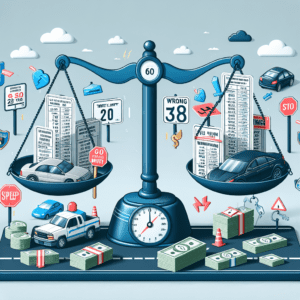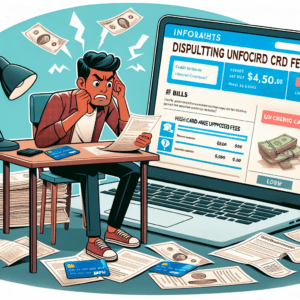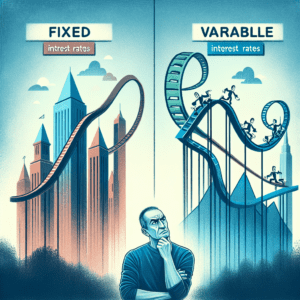“Unlock AI’s Money-Making Potential: 10 Easy Ways to Start Today!”
Freelancing with AI: How to Offer AI-Powered Services and Earn Money
Freelancing with AI presents a unique opportunity for individuals to leverage artificial intelligence tools and technologies to offer valuable services and generate income. As AI continues to evolve, businesses and individuals are increasingly seeking AI-powered solutions to enhance efficiency, automate tasks, and improve decision-making. By understanding how to integrate AI into freelance services, anyone can tap into this growing market and establish a profitable career.
One of the most accessible ways to earn money through AI freelancing is by offering AI-generated content creation. With tools like ChatGPT, Jasper, and Copy.ai, freelancers can produce high-quality blog posts, social media content, product descriptions, and marketing copy. Businesses are constantly in need of engaging and optimized content, and AI-powered writing tools enable freelancers to deliver well-structured and compelling material quickly. By refining AI-generated drafts and adding a human touch, freelancers can provide valuable content that meets client expectations.
Similarly, AI-powered graphic design services are in high demand. Platforms such as Canva, DALL·E, and MidJourney allow freelancers to create stunning visuals, logos, social media graphics, and marketing materials with minimal design experience. By mastering these tools and understanding design principles, freelancers can offer professional-quality designs at competitive rates. Many businesses and entrepreneurs require visually appealing content for branding and advertising, making this a lucrative opportunity for AI-savvy freelancers.
Another profitable avenue is AI-driven video editing and content creation. Tools like Runway ML and Synthesia enable freelancers to generate high-quality videos, animations, and even AI-powered voiceovers. Video content is a dominant force in digital marketing, and businesses are willing to invest in engaging video materials. By offering AI-enhanced video editing services, freelancers can cater to content creators, marketers, and businesses looking to enhance their online presence.
In addition to content creation, AI-powered data analysis and automation services are highly valuable. Many businesses struggle with data management, and AI tools like Tableau, Power BI, and Python-based automation scripts can help analyze large datasets, generate insights, and streamline workflows. Freelancers with expertise in AI-driven data analysis can assist companies in making data-driven decisions, optimizing operations, and improving efficiency.
Moreover, AI chatbots and virtual assistants are becoming essential for customer service and business automation. Freelancers can use platforms like ChatGPT, Dialogflow, and ManyChat to develop AI-powered chatbots that handle customer inquiries, schedule appointments, and provide automated support. Small businesses and startups often lack the resources to develop these solutions in-house, creating a strong demand for freelance chatbot developers.
For those with a background in programming, AI model development and customization offer another lucrative opportunity. Businesses often require tailored AI solutions for tasks such as predictive analytics, recommendation systems, and natural language processing. Freelancers with expertise in machine learning frameworks like TensorFlow and PyTorch can develop custom AI models to meet specific client needs.
Additionally, AI-powered SEO and digital marketing services are in high demand. AI tools like Surfer SEO, Clearscope, and SEMrush help optimize website content, analyze keywords, and improve search engine rankings. Freelancers who understand AI-driven SEO strategies can assist businesses in increasing their online visibility and attracting more customers.
By leveraging AI tools and continuously improving their skills, freelancers can position themselves as valuable service providers in a competitive market. As AI technology advances, the demand for AI-powered services will only grow, making this an excellent time to explore freelancing opportunities in the AI space.
AI-Powered Content Creation: How to Monetize Blogs, Videos, and Social Media

AI-powered content creation has revolutionized the way individuals and businesses generate and monetize digital content. With advancements in artificial intelligence, creating high-quality blogs, videos, and social media posts has become more efficient and accessible. By leveraging AI tools, content creators can streamline their workflow, enhance engagement, and ultimately generate revenue through various monetization strategies. Understanding how to effectively utilize AI in content creation is essential for those looking to establish a profitable online presence.
One of the most effective ways to monetize AI-generated content is through blogging. AI-powered writing assistants can help generate well-structured articles, optimize content for search engines, and even suggest relevant topics based on trending keywords. By consistently publishing high-quality blog posts, creators can attract organic traffic and monetize their websites through display advertising, sponsored content, and affiliate marketing. Additionally, AI-driven tools can assist in content repurposing, allowing bloggers to transform written articles into engaging social media posts or video scripts, further expanding their reach and revenue potential.
Similarly, AI has significantly impacted video content creation, making it easier for individuals to produce professional-quality videos without extensive technical expertise. AI-powered video editing tools can automate tasks such as trimming, captioning, and adding effects, reducing the time and effort required to create compelling content. Moreover, AI-generated voiceovers and text-to-speech technology enable creators to produce videos without the need for on-camera presence. By leveraging these tools, content creators can build a strong presence on platforms like YouTube, TikTok, and Instagram, where monetization opportunities include ad revenue, brand partnerships, and viewer donations.
In addition to blogging and video creation, AI can enhance social media content, making it more engaging and shareable. AI-driven social media management tools can analyze audience behavior, suggest optimal posting times, and generate captions that resonate with followers. By utilizing these tools, content creators can maintain a consistent posting schedule and increase their chances of going viral. Monetization strategies for social media platforms include sponsored posts, affiliate marketing, and selling digital products or services. Furthermore, AI-powered chatbots can help automate customer interactions, allowing businesses and influencers to provide instant responses and improve audience engagement.
To maximize earnings from AI-powered content creation, it is crucial to focus on quality and authenticity. While AI can assist in generating content, human creativity and personal insights remain essential for building a loyal audience. Combining AI-generated content with unique perspectives and storytelling can set creators apart from competitors and establish credibility in their niche. Additionally, staying updated with the latest AI tools and trends can provide a competitive advantage, ensuring that content remains relevant and engaging.
Ultimately, AI-powered content creation offers numerous opportunities for individuals to generate income through blogs, videos, and social media. By leveraging AI tools to enhance efficiency and creativity, content creators can build a sustainable online business. Whether through advertising revenue, brand collaborations, or digital product sales, the potential for monetization is vast. As AI technology continues to evolve, those who embrace its capabilities and integrate them strategically into their content creation process will be well-positioned for long-term success in the digital landscape.
Building and Selling AI Tools: How to Create and Profit from AI Software
Building and selling AI tools presents a lucrative opportunity for individuals looking to capitalize on the growing demand for artificial intelligence solutions. As businesses and consumers increasingly rely on AI-driven applications, there is a significant market for innovative software that enhances productivity, automates tasks, and improves decision-making. By developing AI-powered tools, entrepreneurs can generate substantial revenue while addressing real-world challenges. However, success in this field requires a strategic approach, from identifying market needs to effectively monetizing the final product.
To begin, it is essential to determine a specific problem that AI can solve. Conducting market research helps identify gaps in existing solutions and areas where automation or machine learning can provide a competitive advantage. Whether it is an AI-powered chatbot for customer service, an image recognition tool for e-commerce, or a predictive analytics platform for businesses, selecting the right niche is crucial. Once a viable idea is established, the next step involves developing the software. While technical expertise in machine learning and programming is beneficial, many platforms and tools simplify AI development, allowing even those with limited coding experience to create functional applications.
Leveraging open-source AI frameworks such as TensorFlow, PyTorch, or Scikit-learn can accelerate the development process. These libraries provide pre-built models and algorithms that can be customized to suit specific needs. Additionally, cloud-based AI services from providers like Google Cloud AI, Microsoft Azure AI, and Amazon Web Services (AWS) offer scalable solutions that reduce infrastructure costs and streamline deployment. By utilizing these resources, developers can focus on refining their software’s functionality and user experience rather than building AI models from scratch.
Once the AI tool is developed, testing and optimization are critical to ensuring its effectiveness. Conducting beta tests with a select group of users provides valuable feedback on performance, usability, and potential improvements. Addressing any issues before launching the product enhances its reliability and increases the likelihood of customer satisfaction. Furthermore, incorporating user-friendly interfaces and clear documentation makes the software more accessible to a broader audience, including those without technical expertise.
After refining the AI tool, the next step is determining the most effective monetization strategy. Several options exist, including subscription-based models, one-time purchases, and freemium offerings with premium features. Subscription models provide recurring revenue, making them a popular choice for AI-powered SaaS (Software as a Service) applications. Alternatively, offering a free version with limited functionality can attract users and encourage them to upgrade to a paid plan for additional features. Choosing the right pricing structure depends on the target audience and the value the software provides.
Marketing plays a crucial role in the success of an AI tool. Utilizing digital marketing strategies such as search engine optimization (SEO), content marketing, and social media promotion can increase visibility and attract potential customers. Additionally, listing the software on platforms like the Google Workspace Marketplace, Microsoft AppSource, or AI-focused directories can expand its reach. Partnering with influencers or industry experts to showcase the tool’s capabilities can further enhance credibility and drive sales.
Finally, providing ongoing support and updates ensures long-term success. As AI technology evolves, regularly improving the software with new features and optimizations keeps it competitive. Engaging with users through customer support channels and gathering feedback helps maintain customer satisfaction and fosters brand loyalty. By continuously refining the product and adapting to market trends, developers can sustain profitability and establish a strong presence in the AI industry.














